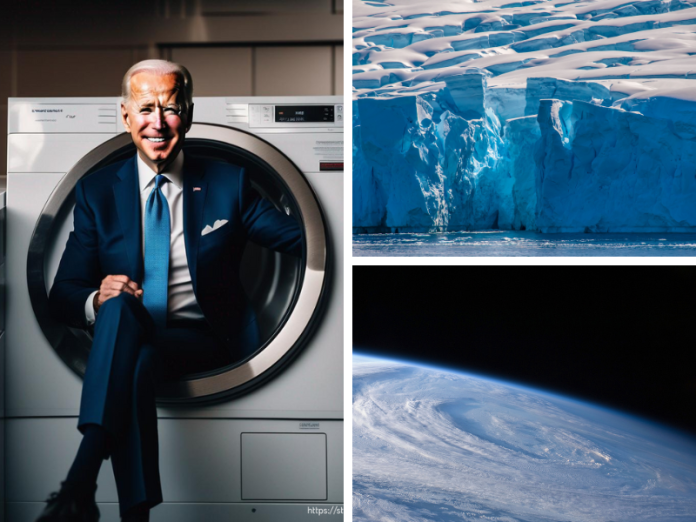YOU SHOULD SUBSCRIBE TO CLIMATE CHANGE WEEKLY.
IN THIS ISSUE:
- The Antarctic Ice Shelf Is More Stable than Climate Alarmists Assert
- Podcast of the Week: Fighting For Freedom Against Climate Tyranny (Guest: Daren Bakst)
- Major Cities Are Sinking Faster than Seas Are Rising
- Data Reveals No Increasing Trends in Extratropical Cyclones
- Appeals Court Blocks Some Major Biden Administration Efficiency Standards
- Climate Comedy
- Video of the Week: Hurricanes and Tropical Cyclones | Climate at a Glance
- Recommended Sites
Miss Anything at Heartland’s Climate Conference? No Problem.

The Antarctic Ice Shelf Is More Stable than Climate Alarmists Assert

Four papers published in peer-reviewed journals in 2023 concerning Antarctica’s ice extent and/or shelves suggest both are more stable than climate alarmists have warned, and Antarctica recovered ice during the current interglacial period, at times when ice levels were lower than they are now, in areas experiencing significant ice loss today.
A paper from researchers at the University of Minnesota and the U.K.’s University of Leeds published in the journal The Cryosphere, published by the European Geosciences Union, finds that in the decade between 2009 and 2019, the Antarctic ice shelves increased in mass and extent, on balance.
Using global satellites to measure changes in 34 ice shelves across Antarctica from 2009 to 2019, they found that 18 ice shelves retreated in extent and 16 larger shelves grew, producing a net increase in ice.
“Our observations show that Antarctic ice shelves gained 661 Gt [gigatons] of ice mass over the past decade,” report the researchers. The ice shelves grew by more than 5305 km2 over the time period. “The largest retreat was observed on the Larsen C Ice Shelf … and the largest area increase was observed on Ronne Ice Shelf in East Antarctica ….” Based on this data, one might surmise that rather than adding to sea level rise, Antarctica’s ice gain is reducing the rate of rise.
A second paper, published in Geophysical Research Letters, by an international team of researchers from universities and research institutes in the United States, Switzerland, and France, found that the rate of meltwater in Antarctica has declined between 1980 and 2021, with the highest rate recorded in the mid-1990s nearly 30 years of global warming ago.
Using satellite microwave measurements run through the physics-based multi-layer snow model SNOWPACK, the team of scientists found the highest meltwater volumes were produced on the Antarctic Peninsula, peaking in 1992-1993 and again in 1994-1995. Despite that, they write that there has been a “a small, but significant, decreasing trend in both annual melt days and meltwater production volume over the 41 years.”
Then, we come to a 2023 paper published in the prominent science journal Nature by an international team of scientists from universities and research institutes in England, Scotland, and the United States, which found the rate of ice decline in West Antarctica is not reflected in ice trends elsewhere on the continent and varies dramatically by location. They surmise that the ongoing ice loss in the region is likely being driven by “interdecadal atmosphere/ocean variability,” although more study is warranted because direct observations have been limited over time.
A fourth paper in 2023 that examined ice trends in Antarctica, also published in the peer-reviewed journal The Cryosphere, determined that ice sheets were thinner in Antarctica during the present interglacial in the past than they are now, and that they recovered, indicating natural cycles drive ice extent changes on the continent and ice declines are not irreversible.
In this paper, a team of 13 researchers from universities in the United States, the United Kingdom, and Australia, including a group of scientists on the ground at the British Antarctic Survey in Antarctica, used cosmogenic-nuclide analysis, a method of determining the age of geologic events and landforms, to examine the history of ice sheet decline and expansion in an area of West Antarctica abutting the Amundson Sea, during the present interglacial period (the Holocene).
They found a large area:
…between Thwaites and Pope glaciers was at least 35 m thinner than present in the past several thousand years and then subsequently thickened.
A past episode of ice sheet thinning that took place in a similar, although not identical, climate was not irreversible.
This research indicates that the present deglaciation is not unique within the Holocene, natural factors have driven deglaciation historically, and such events are not just reversible—climate alarmists warn such deglaciations are irreversible and so must be prevented by ending the use of fossil fuels—but have reversed themselves previously, with sea levels falling after the reglaciation commenced.
Collectively, these papers show that we know less about the Antarctic ice sheets, their historic trends, and what makes them add and lose ice, over what time scales, and what the long-term impact of such changes are globally, than climate alarmists claim or that climate modelers can model. What the evidence does indicate, however, is that glaciation and deglaciation is not uncommon and historically has been driven by natural factors. As importantly, on net, the Antarctic ice sheet is gaining, rather than losing, ice.
Source: No Tricks Zone; The Cryosphere; Geophysical Research Letters
Get your Copy at Amazon TODAY!
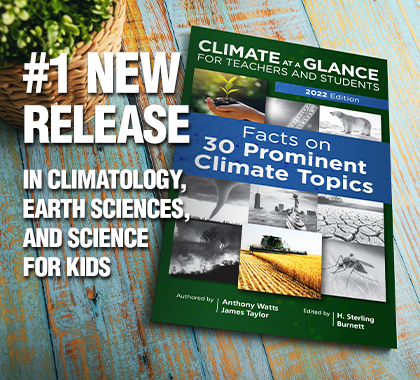
Podcast of the Week
Host H. Sterling Burnett engages with Daren Bakst, the new Director of CEI’s Center for Energy and Environment. The discussion focuses on CEI’s longstanding commitment to challenging government policies that encroach on property rights and individual freedom. The episode particularly examines how climate change is leveraged by proponents of expansive government control, with specific attention to international agreements like those established at COP 28
Subscribe to the Environment & Climate News podcast on Apple Podcasts, iHeart, Spotify or wherever you get your podcasts. And be sure to leave a positive review!
Read the brutal truth about how battery production for electric vehicles cause immense environmental destruction and human tragedy.
Major Cities Are Sinking Faster than Seas Are Rising
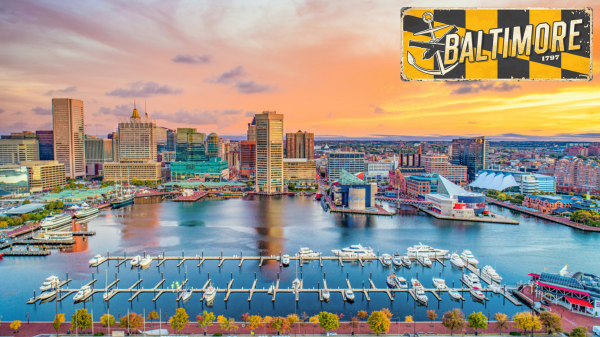
New research published at the Proceedings of the National Academy of Sciences Nexus indicates that a significant factor in “rising sea levels” measured at cities on the U.S. eastern seaboard is land subsidence due to groundwater withdrawals—in other words, they are sinking.
A team of researchers led by Leonard O. Ohenhen at the Virginia Polytechnic Institute and State University, with others from Virginia Tech and the U.S. Geological Survey as co-authors, used “measurements of vertical land motion rates obtained from analysis of radar datasets to evaluate the subsidence-hazard exposure to population, assets, and infrastructure.”
As reported in the Daily Mail, their analysis found “‘hotspots’ from Florida to New Hampshire that are dropping as much as five millimeters a year due to groundwater extraction and the weight of infrastructure.”
A number of areas along the mid-Atlantic coast are subsiding at annual rates exceeding the calculated rate of actual sea level rise for those areas each year.
Among the “hotspots” identified by the researchers as suffering the most severe rates of subsidence counties are: Hampton, Norfolk, Virginia Beach, and Chesapeake in Virginia; Baltimore, Maryland; Union, Middlesex, Monmouth, and Ocean in New Jersey; New Haven, Connecticut; and several counties in New York City and on Long Island, New York.
“The percent land area within each county affected by subsidence on the US east coast has important implications for flood frequency and severity in the different communities,” state the authors. “Land subsidence can potentially increase the flooded area during coastal storm events by modifying the base flood elevations and topographic gradients.”
Their research indicates that subsidence is already causing damage to major infrastructure like roads, urban rail, and railways along the U.S. East Coast.
Sources: The Daily Mail, Proceedings of the National Academy of Sciences Nexus
Heartland’s Must-read Climate Sites



Data Reveals No Increasing Trends in Extratropical Cyclones
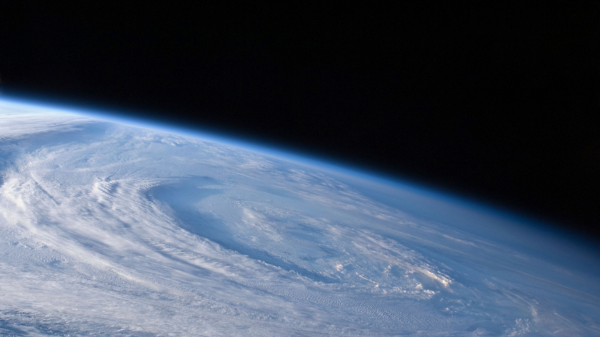
Hurricanes and tropical cyclones aren’t the only significant types of storm systems that climate change is supposed to be making more frequent and/or severe; climate change is also supposed to be exacerbating extra-tropical cyclones (ETC).
Stanley Goldberg, a meteorologist with National Oceanic and Atmospheric Administration’s Hurricane Research Division in Miami, describes the difference between an ETC and a tropical cyclone, which is a:
…storm system that primarily gets its energy from the horizontal temperature contrasts that exist in the atmosphere. Extra-tropical cyclones (also known as mid-latitude or baroclinic storms) are low pressure systems with associated cold fronts, warm fronts, and occluded fronts.
Tropical cyclones, in contrast, typically have little to no temperature differences across the storm at the surface and their winds are derived from the release of energy due to cloud/rain formation from the warm moist air of the tropics.
Although formed through different atmospheric mechanisms, both types of storms can produce damage from high winds and heavy rainfall.
Like hurricanes and tropical cyclones, reveals Paul Homewood at Not a Lot of People Know That, ETCs aren’t playing by the climate alarm playbook. Data show ETCs in the United Kingdom, for example, have not been as severe in recent decades as they were in the past, despite media coverage of ETCs in recent years claiming otherwise.
And globally, there is no evidence ETCs are worsening either. Who says so? Why, the U.N. Intergovernmental Panel on Climate Change, which states in its Sixth Assessment Report:
[T]here is overall low confidence in recent changes in the total number of ETCs over both hemispheres, … since the 1980s. Overall, there is also low confidence in past-century trends in the number and intensity of the strongest ETCs due to the large interannual and decadal variability. . . . Over the Northern Hemisphere, there is high agreement among reanalyses that the number of cyclones with low central pressures has decreased in summer and winter during the period 1979–2010. However, changes exhibit substantial decadal variability and do not show monotonic trends since the 1980s. For example, over the Arctic and North Atlantic, Tilinina et al. (2013) showed that the number of cyclones with very low central pressure … increased from 1979 to 1990 and then declined until 2010 in all five reanalyses considered. Over the North Pacific, the number of cyclones with very low central pressure reached a peak around 2000 and then decreased until 2010 in the five reanalyses considered.
So, despite climate alarmists predictions based on model outputs, there is no trend in more powerful or more frequent ETCs. Rather, they are forming and dissipating as they have historically, varying in number and intensity both annually and on a decadal scale.
Source: Climate-Science Press
Appeals Court Blocks Some Major Biden Administration Efficiency Standards

In a major blow to the Biden administration’s efforts to reduce energy use by household appliances in order to fight climate change, the U.S. Court of Appeals for the Fifth Circuit rejected the Biden administration’s 2022 rule, which rolled back Trump-era efficiency standards for dishwashers and short-cycle washing machines.
The court ruled that when rolling back the Trump administrations standards, the Biden administration failed to address official comments and complaints filed by consumer groups and manufacturers, and produced rules that were likely to result in products that are less efficient in terms of water and energy use than the rules they were replacing.
As reported by the Washington Examiner:
Trade groups and appliance manufacturers also pushed back on the proposed rule, arguing in comments published in the Federal Register that the changes could hurt appliance performance and lead to longer wash times with lower efficiency— potentially forcing consumers to run multiple cycles.
[and]
Led by Jeff Landry, then attorney general and now Governor of Louisiana, 11 states sued to overturn the Biden administrations rules, which they argued would harm consumers and were illegal because they were “arbitrary and capricious.”
The court agreed in its decision that the DOE:
[F]ailed to adequately consider appliance performance, substitution effects, and the ample record evidence that DOE’s conservation standards are causing Americans to use more energy and water rather than less” in its proposed rule, despite the objections raised by manufacturers.
DOE recognized the facts that undermined its Repeal Rule, cited other facts to suggest the Repeal Rule would conserve water and energy, and then implicitly credited the latter without explaining why. That is the touchstone of arbitrary and capricious agency action.
Commenting on the court’s ruling in an article published by Fox News, Devin Watkins, an attorney with the Competitive Enterprise Institute, said, “In this opinion, the court has forced DOE to follow the law and even noted that one of the positions DOE took in this suit ‘borders on frivolous.’ This decision allows manufacturers to build better dishwashers, not be encumbered by counterproductive federal regulations.”
I also provided a quote for the Fox News story, noting the decision was a boon for consumer freedom, especially beneficial to lower income households.
“This is a huge win for consumers, especially lower income consumers, allowing them the continued freedom to choose the washing machines and dishwashers that have proven to meet their needs,” I told Fox News. “Water and energy use are just one factor when choosing an appliance to purchase, and the government should not be deciding for individuals that it’s the primary one.
“This will keep less expensive models, effective models on the market allowing lower income Americans to purchase a new appliance when desired without necessarily having to make sacrifices elsewhere,” I concluded.
To be clear, this is a single step—a large one but still just one step—in the battle climate and energy realists are waging against the Biden administration’s onslaught on freedom of choice in appliances.
“DOE has pursued regulations targeting gas stoves, water heaters, home furnaces, refrigerators and several other popular appliances,” notes Thomas Catenacci, reporting for Fox News. “Energy Secretary Jennifer Granholm vowed in December to continue issuing such rulemakings in 2024.”
Knowing how the Biden administration has ignored court rulings in the past, I suspect, sadly, this ruling won’t give the anti-consumer, climate-climate obsessed cronies within the administration any pause.
Sources: Washington Examiner; Fox News
Video of the Week
In the second of a new series based on The Heartland Institute’s Climate at a Glance for Teachers and Students, research fellow Linnea Lueken presents the facts about hurricanes. Are they reaching historic levels of destruction, or is the media ignoring the data? The answers you need can be found in Climate at a Glance!
Climate Comedy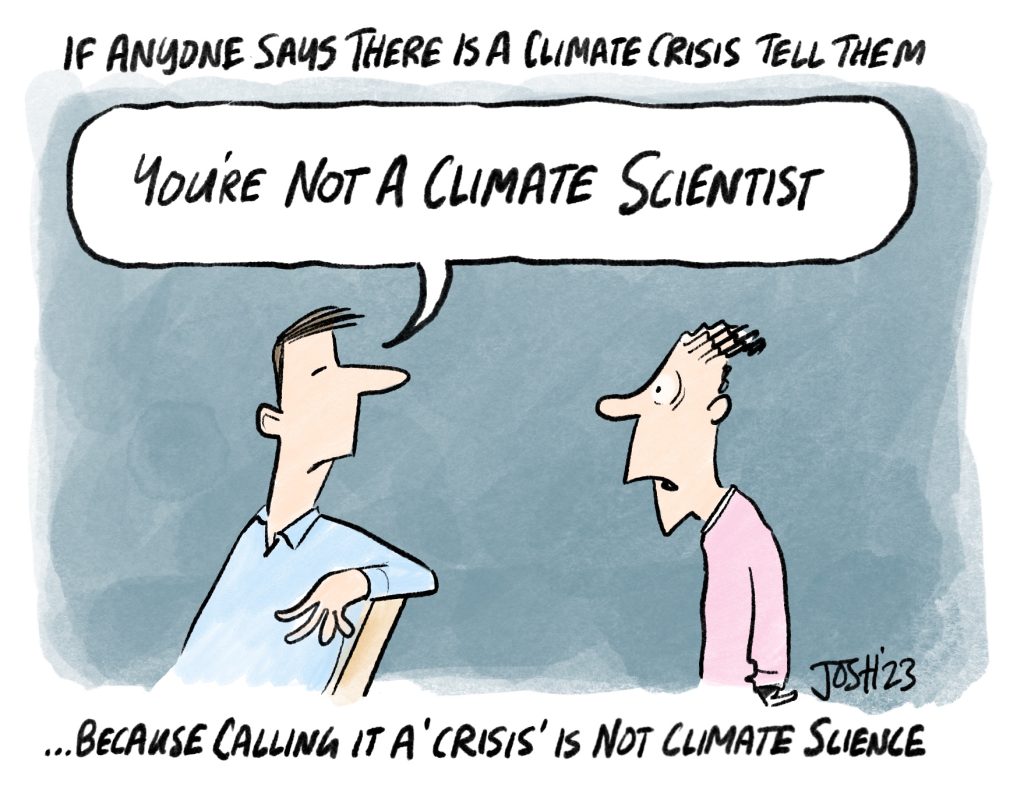
via Cartoons by Josh


